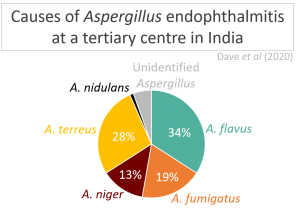Submitted by BethBradshaw on 1 March 2018
Caspofungin acetate is the active ingredient in Cancidas®, which is sold by Merck & Co as a powder for intravenous infusions. It is indicated for invasive aspergillosis where the patient cannot tolerate, or does not respond to, amphotericin B or itraconazole. Merck’s patent expired in March 2017, and three companies have since been granted approval by the FDA to produce generic versions: Fresenius Kabi USA (for the US), Gland Pharma Ltd, and Mylan Labs Ltd.
The prospect of cheaper caspofungin is very welcome as it should give more clinicians access to the echinocandin class of drugs. This should give them more flexibility to tailor treatment regimes to individual patients, especially where drug-drug interactions or comorbidities must be taken into account.
However, price is unfortunately not the only consideration in countries where modern antifungals may not even be licensed for use. According to one study by Kneale et al (2016), around 7% of the world’s population lack access to amphotericin B and around 40% lack access to flucytosine. Caspofungin is currently licensed in the USA, most of Europe and Japan, but the full list of countries is not known as there is no central database of which drugs are licensed in which countries.
While the existence of generics generally results in lower prices, the economics are complex and some companies who find themselves the only manufacturer of a generic drug engage in price gouging. For example the antifungal flucytosine is a crucial drug for treating cryptococcal meningitis.In 2016, it was being sold in the USA for 9000x the price in Europe, costing $28,000 for a 2-week course, which put extremely vulnerable patients at risk of not receiving life-saving treatment. Generic caspofungin will not be so vulnerable to these effects because there will be multiple manufacturers in competition with one another.
Read more about drug price gouging at Vice News.

Caspofungin is a semisynthetic echinocandin, made by modifying a natural fermentation product (pneumocandin B0, right) produced by the fungus Glarea lozoyensis (left).
News archives
-
Title
Date


